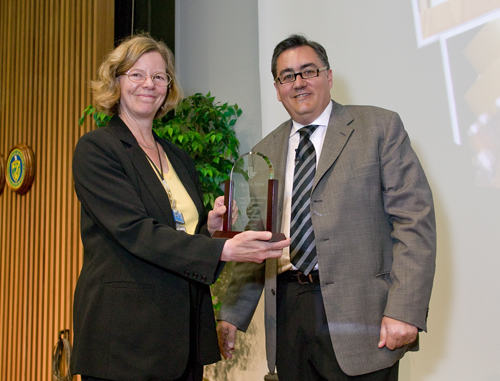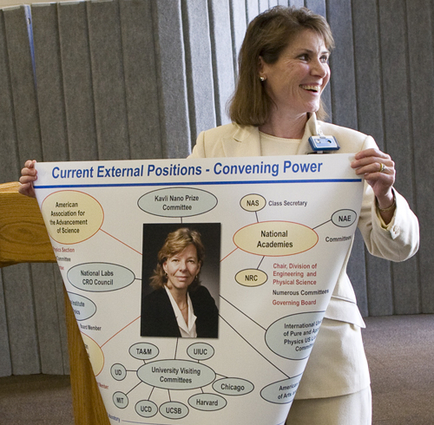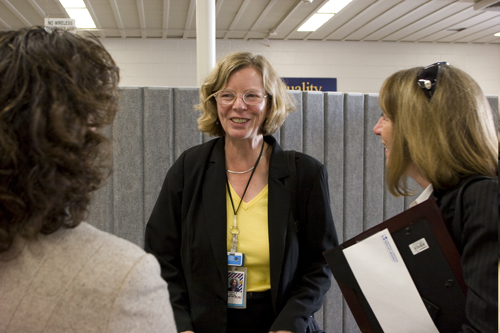Cherry Murray bids fond farewell to Laboratory
This kind of opportunity only comes once in every 10-20 years. And for someone in the science field, you'd have to be nuts not to jump at it.
And Cherry Murray isn't nuts. In fact, all her faculties were intact as she has accepted a position as the first female dean of the new School of Engineering and Applied Science at Harvard University, effective July 1.
Make no mistake. She wasn't looking to leave the Laboratory after her five years, most recently as principal associate director of Science and Technology.
"Harvard approached me," said Murray from her bare office (her last day was June 10). "It's a real opportunity that doesn't come around often."
Of the last five deans of engineering at Harvard, which until last year was a division of the Faculty of Arts and Sciences, four stayed for 20 years and one stayed for 10 years.
"They (Harvard) want the deans to have a real impact," she said. "You can't turn them down because it doesn't happen very often…This has happened at the stage in my career that I'm sufficiently young enough that I can start a new chapter."
Murray isn't just the most senior female scientific manager in the history of the Laboratory, she's also president of the American Physical Society, a member of both the National Academies of Science and Engineering and a participant in countless scientific review committees. She plans to remain active not only in APS and the National Academies when she starts at Harvard, but she also will continue to consult with the Laboratory, specifically with Bruce Goodwin, principal associate director for Weapons and Complex Integration.
"She will truly be missed," said Monya Lane, acting associate director of Engineering. "She is a role model for all the women of the Laboratory."
As a teenager trying to decide whether to major in art or physics, her brother told her she'd never cut it at MIT. But she not only got into MIT, she earned her bachelor's and doctorate and went on to have a very successful 27-year career at Bell Labs.
"She has more substantiative connections in the external scientific field than anyone I have known in my 30 years at the Laboratory," said Lee Younker of the Director's Office.
While at Bell, Murray had some of the best times of her life. "It was a no brainer to take the job. It was heaven on earth for a research scientist," Murray said in an earlier interview. "It was really a fun time. In those years, Bell Labs' Physical Sciences Research won three Nobel prizes in succession; we had outstanding people doing great things. It was a real pleasure. We had enough money. The hardest thing was to figure out strategically what research to fund with the money."
But Murray also accomplished some outstanding feats herself, particularly in the area of surface physics, light scattering and complex fluids. She went from staff scientist when she was hired just out of school to senior vice president by 2000. In 1989, she was awarded the American Physical Society's Maria Goeppert Mayer award "to recognize and enhance outstanding achievement by a woman physicist in the early years of her career." In 2005, while at LLNL, she won APS's prestigious George Pake Prize for research and scientific leadership.
And a leader she is. She was hired at LLNL as the deputy director of Science and Technology in 2004 and went on to become the Science and Technology PAD after the transition. And while she was familiar with national security issues before she came to the Laboratory, she's learned "a huge amount, more than I could have done from the outside." She continues to be awed by the scientific staff: "I'm really impressed with the quality and sheer excellence of science and technology here at LLNL."
As Murray says goodbye to the Laboratory, she plans to be an ambassador for the national labs by letting more people know exactly what they do.
"What impressed me the most was the behavior that she modeled coming in from the outside," said Bill Goldstein, associate director of Physical and Life Sciences. "With all the peculiarities of the Laboratory, especially the senior management, she took it all in stride. She took a hard job and she didn't break a sweat."







